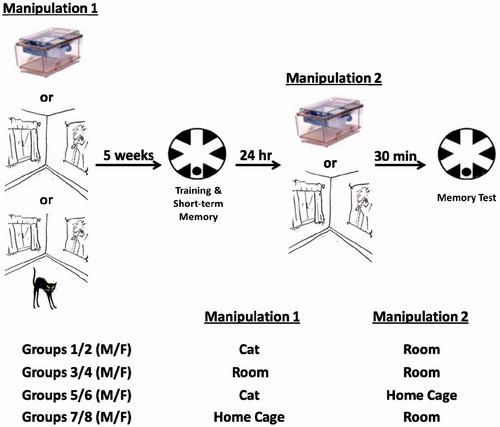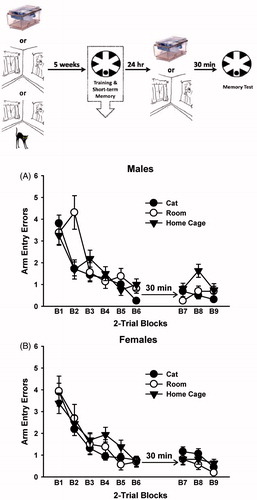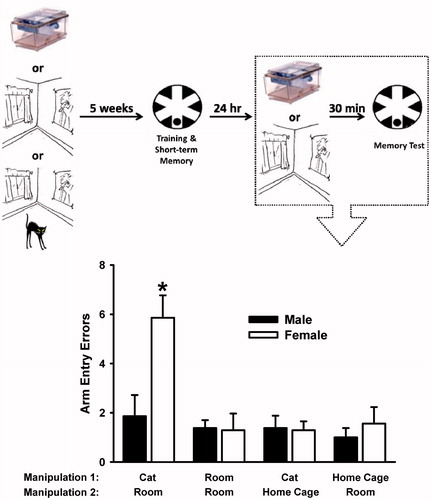Figures & data
Figure 1. Experimental timeline (top) and groups (bottom). One-month-old rats were exposed to their home cages, a laboratory room or a laboratory room with a cat for 30 min (Manipulation 1). Five weeks later, rats learned to locate a hidden platform in the RAWM; 24 h later, the rats either remained in their home cages or were exposed to the laboratory room for 30 min (Manipulation 2). Exposure to the laboratory room served as a reminder of the stressor for rats previously exposed to the room with a cat; 30 min after Manipulation 2, the rats were given a long-term memory test trial in the RAWM. Experimental groups are outlined below the timeline. Male (M) and female (F) rats were tested.

Figure 2. Arm entry errors committed in the radial-arm water maze (RAWM) during acquisition and the short-term memory test trials in male (A; top) and female (B; bottom) rats. The groups are identified in the key by manipulations performed 5 weeks prior to training. The top panel illustrates the experimental timeline, and the box depicts the time point for data. Performance during acquisition (Trials 1–12) and the short-term memory test trials (Trials 13–18) is presented in two-trial blocks (indicated by B1–B9). All rats acquired the spatial learning task, as evidenced by a significant decrease in arm entry errors across trials (p < 0.05, ANOVA). The data are mean ± SEM. N = 8–9 rats per group.

Figure 3. Arm entry errors committed in the radial-arm water maze (RAWM) during the 24-h long-term memory test. Below the x-axis, the groups are identified by the manipulations that were performed on them during time point 1 (i.e. 5 weeks prior to training) and time point 2 (i.e. immediately prior to water maze testing). The top panel illustrates the experimental timeline, and the box depicts the time point for the data. Female rats exposed to a cat during time point 1 and then given a reminder of that experience immediately prior to memory testing made significantly more arm entry errors than all other groups. Data are mean ± SEM. N = 8–9 rats per group. *p < 0.05 versus all other groups, Holm–Sidak post hoc test.
